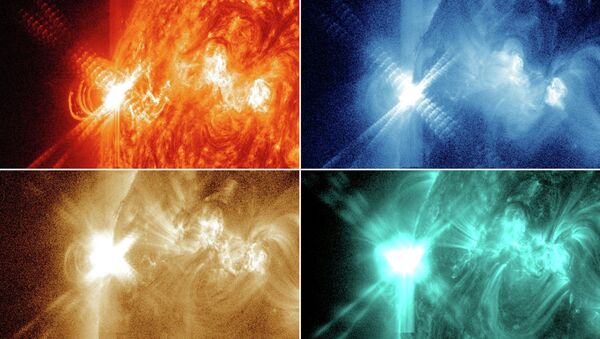Researchers from Aberystwyth University in Wales, Queen's University Belfast, and other universities across Europe have discovered that the Sun's magnetic field is roughly ten times more powerful than previously believed.
The scientists' findings, published in the Astrophysical Journal, were made possible thanks to Dr. David Kuridze and his team's close observation of a particularly powerful solar flare on the Sun's surface over a ten day period in September 2017 using data from Sweden's 1-m Solar Telescope in Roque de Los Muchachos Observers in the Canary Islands.
"Everything that happens in the Sun's outer atmosphere is dominated by the magnetic field, but we have very few measurements of its strength and spatial characteristics," Dr. Kuridze explained. "These are critical parameters, the most important for the physics of the solar corona," the scientist added, referring to the aura of plasma which surrounds the Sun and other stars and extends millions of kilometers into outer space.
The focus on the solar flare allowed researchers, for the first time ever, to "measure accurately the magnetic field of the coronal loops, the building blocks of the Sun's magnetic corona, with such a level of accuracy," Dr. Kuridze noted.
Previously, scientists were limited by the weakness of the signal from the Sun's atmosphere that actually makes its way to Earth, and the relatively low power of man-made instruments, with magnetic fields studied in Dr. Kuridze et al's study registering at a whopping 100 times weaker than those encountered in a typical hospital MRI scanner. Nevertheless, these readings are still strong enough to confine the solar plasma making up a solar flare to within 20,000 km above the Sun's surface.
Study coauthor Dr. Michail Mathioudakis, a professor at Queen's University Belfast's school of mathematics and physics, boasted that the study contains a "unique set of observations" which, "for the first time, provide a detailed map of the magnetic field in coronal loops." The result, according to the academic, will be the opening of "new avenues in the study of the solar corona." These findings, in turn, could very well change humanity's understanding of the processes taking place in the Sun's immediate atmosphere.



